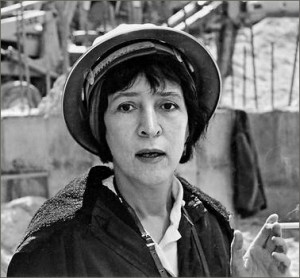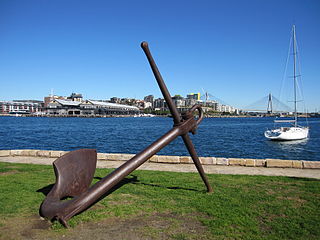Related Research Articles

SOM, previously Skidmore, Owings & Merrill LLP, is a Chicago-based architectural, urban planning, and engineering firm. It was founded in 1936 by Louis Skidmore and Nathaniel Owings. In 1939, they were joined by engineer John O. Merrill. The firm opened its second office, in New York City, in 1937 and has since expanded, with offices in San Francisco, Los Angeles, Washington, D.C., London, Melbourne, Hong Kong, Shanghai, Seattle, and Dubai.
The Guildhall School of Music and Drama is a music and drama school located in the City of London, England. Established in 1880, the school offers undergraduate and postgraduate training in all aspects of classical music and jazz along with drama and production arts. The school has students from over seventy countries. It was ranked first in both the Guardian's 2022 League Table for Music and the Complete University Guide's 2023 Arts, Drama and Music league table. It is also ranked the fifth university in the world for performing arts in the 2024 QS World University Rankings.
Urban studies is the diverse range of disciplines and approaches to the study of all aspects of cities, their suburbs, and other urban areas. This includes among others: urban economics, urban planning, urban ecology, urban transportation systems, urban politics, sociology and urban social relations. This can be contrasted with the study of rural areas and rural lifestyles.

Old World Wisconsin is an open-air museum located near Eagle, in Waukesha County, Wisconsin, United States. It depicts housing and the daily life of settlers in 19th-century Wisconsin, with separate areas representing the traditions of different ethnic groups who settled in the state. Costumed interpreters portray the occupations and chores of typical settlers of the time.
Sir Frederick Ernest Gibberd CBE was an English architect, town planner and landscape designer. He is particularly known for his work in Harlow, Essex, and for the BISF house, a design for a prefabricated council house that was widely adopted in post-war Britain.

Charles Alexander Jencks was an American cultural theorist, landscape designer, architectural historian, and co-founder of the Maggie's Cancer Care Centres. He published over thirty books and became famous in the 1980s as a theorist of postmodernism. Jencks devoted time to landform architecture, especially in Scotland. These landscapes include the Garden of Cosmic Speculation and earthworks at Jupiter Artland outside Edinburgh. His continuing project Crawick Multiverse, commissioned by the Duke of Buccleuch, opened in 2015 near Sanquhar.

Helen Levitt was an American photographer and cinematographer. She was particularly noted for her street photography around New York City. David Levi Strauss described her as "the most celebrated and least known photographer of her time."

A soapbox is a raised platform on which one stands to make an impromptu speech, often about a political subject. The term originates from the days when speakers would elevate themselves by standing on a wooden crate originally used for shipment of soap, or other dry goods, from a manufacturer to a retail store.
Ken Yeang is an architect, ecologist, planner and author from Malaysia, best known for his ecological architecture and ecomasterplans that have a distinctive green aesthetic. He pioneered an ecology-based architecture, working on the theory and practice of sustainable design. The Guardian newspaper (2008) named him "one of the 50 people who could save the planet". Yeang's headquarters is in Kuala Lumpur (Malaysia) as Hamzah & Yeang, with offices in London (UK) as Llewelyn Davies Ken Yeang Ltd. and Beijing (China) as North Hamzah Yeang Architectural and Engineering Company.

Imre Makovecz was a Hungarian architect active in Europe from the late 1950s onward.
An eco-city or ecocity is "a human settlement modeled on the self-sustaining resilient structure and function of natural ecosystems", as defined by Ecocity Builders. Simply put, an eco-city is an ecologically healthy city. The World Bank defines eco-cities as "cities that enhance the well-being of citizens and society through integrated urban planning and management that harness the benefits of ecological systems and protect and nurture these assets for future generations". Although there is no universally accepted definition of an 'eco-city', among available definitions, there is some consensus on the basic features of an eco-city.

William Graham Holford, Baron Holford, was a British architect and town planner.

Ecological design or ecodesign is an approach to designing products and services that gives special consideration to the environmental impacts of a product over its entire lifecycle. Sim Van der Ryn and Stuart Cowan define it as "any form of design that minimizes environmentally destructive impacts by integrating itself with living processes." Ecological design can also be defined as the process of integrating environmental considerations into design and development with the aim of reducing environmental impacts of products through their life cycle.
This page is an index of sustainability articles.

Paul F Downton is a sustainable city theorist and activist, ecological architect, urbanist and professional writer on architecture, ecocities, environment and the arts. He designed the Christie Walk development in Adelaide, Australia.
Geraldine Houser is a British former film and television actress and the mother of video game producers Sam and Dan Houser. She has roles in a large number of British TV drama series in the 1960s and 70s and is best remembered in films for her role alongside Michael Caine in the gangster film Get Carter (1971), set in and around Newcastle-Upon-Tyne.
Ecological art is an art genre and artistic practice that seeks to preserve, remediate and/or vitalize the life forms, resources and ecology of Earth. Ecological art practitioners do this by applying the principles of ecosystems to living species and their habitats throughout the lithosphere, atmosphere, biosphere, and hydrosphere, including wilderness, rural, suburban and urban locations. Ecological art is a distinct genre from Environmental art in that it involves functional ecological systems-restoration, as well as socially engaged, activist, community-based interventions. Ecological art also addresses politics, culture, economics, ethics and aesthetics as they impact the conditions of ecosystems. Ecological art practitioners include artists, scientists, philosophers and activists who often collaborate on restoration, remediation and public awareness projects.

Towers in the park is a morphology of modernist high rise apartment buildings characterized by a high-rise building surrounded by a swath of landscaped land. Thus, the tower does not directly front the street.

Iloura Reserve is a heritage-listed public reserve on the site of a former timber yard at 10–20 Weston Street, Balmain East, Inner West Council, Sydney New South Wales, Australia. Following the resumption of the timber yard for public space in the 1960s, the present reserve was designed and laid out by landscape architect Bruce Mackenzie and constructed in two stages: stage one in 1970 and stage two in 1981. It is also known as Peacock Point and Illoura. The reserve is owned by the Inner West Council. It was added to the New South Wales State Heritage Register on 29 November 2013.
Lydia Kallipoliti is a Greek architect, engineer, architectural historian, action researcher, and scholar. Her work examines interdisciplinary studies involving architecture, technology, and environmental politics.
References
- ↑ Stephen E. Hunt, The Revolutionary Urbanism of Street Farm: Eco-anarchism, Architecture and Alternative Technology in the 1970s (Bristol: Tangent, 2014).
- ↑ Lydia Kallipoliti, 'Review: Clearings in a Concrete Jungle', Journal of the Society of Architectural Historians, 70.2 (June 2011), 240-244.
- ↑ Kallipoliti, Lydia (2012). "From Shit to Food: Graham Caine's Eco-House in South London, 1972–1975". Buildings & Landscapes: Journal of the Vernacular Architecture Forum. 19 (1): 87–106. doi:10.5749/buildland.19.1.0087. JSTOR 10.5749/buildland.19.1.0087.
- ↑ Gerald Leach, 'Living off the Sun in South London,' The Observer (27 August 1972), 1-2.
- ↑ Hansard HL Deb 27 November 1973, vol 347, cols 51-52.
- ↑ Lydia Kallipoliti, 'From Shit to Food: Graham Caine's Eco-House in South London, 1972-1975', Buildings and Landscapes, 19.1 (Spring 2012), 87-106.